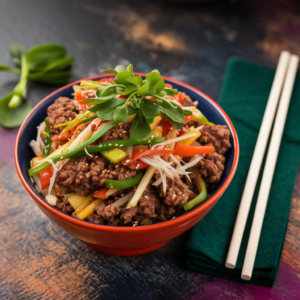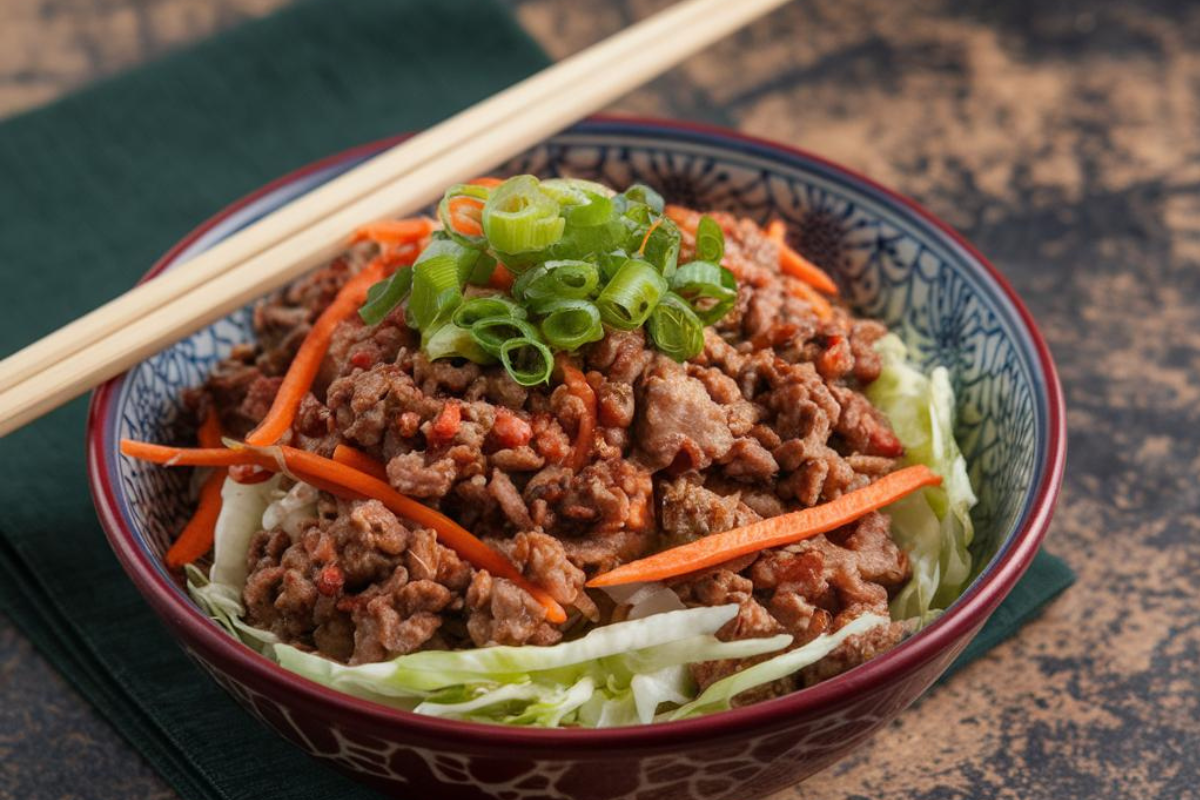Egg rolls are a delicious appetizer that has been loved across the globe. Originating from Chinese cuisine, these crispy rolls are filled with a variety of ingredients like ground pork, shredded vegetables, and flavorful seasonings, all wrapped up in a light, crispy shell. Egg rolls are perfect for family gatherings, as an appetizer, or just as a savory snack when you crave something crispy and flavorful. In this comprehensive guide, we’ll explore everything you need to know to cook the perfect egg rolls from selecting ingredients to cooking techniques that give you that restaurant-quality crispiness.
Why Make Egg Rolls at Home ?
Homemade egg rolls not only allow you to control the quality of ingredients but also give you the freedom to experiment with different fillings, such as seafood, tofu, or extra vegetables. Whether you like your egg rolls stuffed with spicy flavors or prefer a classic version with pork, there’s something deeply satisfying about mastering this popular appetizer at home. Moreover, once you get the hang of it, egg rolls can be an incredibly versatile dish.
What You’ll Need ?
Essential Ingredients.
To make the perfect egg rolls, you’ll need:
- Meat: Ground pork, chicken, or shrimp are commonly used, but you can also go for a vegetarian filling with mushrooms or tofu.
- Vegetables: Fresh, crisp vegetables like shredded cabbage, julienned carrots, green onions, and bean sprouts work well.
- Seasonings:
- Garlic and ginger: The foundation of flavor for most Asian dishes.
- Soy sauce: Adds a salty umami taste.
- Sesame oil: To bring that nutty richness to the dish.
- Egg Roll Wrappers: These are often available in the refrigerated section of grocery stores, but you can also make your own if you’re feeling ambitious.
- Binding Agent: One egg, beaten, is used to seal the wrappers.
Optional Ingredients
If you want to spice up your egg rolls or make them unique, consider these optional ingredients:
- Water Chestnuts: Adds crunch to the filling.
- Tofu: For a vegetarian or vegan option.
- Cilantro and Fresh Herbs: To brighten the flavor profile.
- Chili Paste or Powder: If you like your egg rolls to have a kick.
Choosing the Wrappers
The wrapper is an important part of what makes an egg roll distinct from other similar dishes, such as spring rolls. Egg roll wrappers are thicker and give that crunchy texture after frying. You can also use spring roll wrappers if you prefer a lighter, flakier shell, but they won’t be as substantial as the traditional egg roll wrappers.
Preparing the Filling.
Step-by-Step Filling Recipe.
1. Cooking the Meat.
- Heat Oil: Start by heating vegetable oil in a skillet over medium heat.
- Add Ground Meat: Add the ground pork or chicken, and season with a pinch of salt and pepper. Stir occasionally until the meat is browned and cooked through.
- Garlic and Ginger: Stir in minced garlic and ginger; let it cook until fragrant—this usually takes about 1-2 minutes.
2. Adding Vegetables.
- Add Cabbage and Carrots: Stir in the shredded cabbage, carrots, and green onions. Cook until the vegetables begin to soften, approximately 4-5 minutes.
- Flavor Additions: Add in soy sauce and a drizzle of sesame oil. Cook for another minute to ensure everything is well coated.
Key Tips for a Perfect Filling.
- Texture Balance: Ensure the vegetables remain slightly crisp to add texture. Overcooked vegetables will make the filling soggy.
- Moisture Control: If your filling has too much liquid, drain it before stuffing the wrappers. Excess moisture can make your egg rolls greasy or cause the wrappers to tear.
Wrapping the Egg Rolls.
Step-by-Step Guide to Wrapping.
- Set Up Your Wrapping Station: Place a damp cloth over the egg roll wrappers to prevent them from drying out. Keep your filling, beaten egg, and wrappers all within reach.
- Filling the Wrapper: Place a wrapper on a flat surface, oriented like a diamond, with a corner pointing toward you. Spoon about 2-3 tablespoons of filling onto the lower third of the wrapper.
- Fold and Roll: Fold the corner closest to you over the filling. Tuck it in snugly and then fold the sides inward. Continue to roll up toward the opposite corner, keeping it tight.
- Seal the Wrapper: Use the beaten egg to seal the final corner, making sure it adheres well so that the egg roll stays intact while frying.
Common Wrapping Mistakes to Avoid.
- Overfilling: Overstuffed egg rolls are harder to roll and are likely to tear during frying.
- Loose Wrapping: Not wrapping tightly enough will result in oil seeping inside during cooking, which makes the rolls soggy.
Cooking Methods: Frying, Baking, and Air-Frying.

1. Deep Frying: The Classic Approach.
- Heat Oil: In a heavy-bottomed pot, heat about 2-3 inches of oil to 350°F. A thermometer is helpful to maintain this steady temperature.
- Fry the Egg Rolls: Fry 3-4 egg rolls at a time, turning them occasionally, until they are golden brown. This takes about 3-5 minutes per batch.
- Drain: Place fried egg rolls on a wire rack or paper towels to drain excess oil.
Tips for Frying
- Maintain a consistent temperature to ensure the rolls cook evenly and achieve that coveted crispiness.
- Frying too many egg rolls at once will reduce the oil temperature, leading to greasy, undercooked rolls.
2. Baking: A Healthier Alternative.
For those looking to cut down on oil, baking is an excellent option.
- Preheat Oven: Preheat the oven to 425°F.
- Brush with Oil: Lightly brush each roll with vegetable oil.
- Bake: Arrange them on a baking sheet and bake for about 20-25 minutes, flipping halfway through, until golden brown.
3. Air-Frying: The Best of Both Worlds.
- Preheat Air Fryer: Preheat to 400°F.
- Lightly Oil the Rolls: Coat the egg rolls with a small amount of cooking spray.
- Cook: Place the egg rolls in the air fryer basket, ensuring they are not touching. Cook for 10-12 minutes, turning halfway through.
Choosing the Best Cooking Method
- Deep Frying gives the crispiest result, with a golden brown shell.
- Baking is best if you want to keep the recipe lower in fat.
- Air-Frying is a great compromise, giving almost the same crispiness as deep-frying with much less oil.
Serving Suggestions
Classic Dipping Sauces
Egg rolls are best enjoyed with a selection of dipping sauces:
- Sweet Chili Sauce: A classic dip for a slightly spicy and sweet contrast.
- Sweet and Sour Sauce: Complements the savory pork and vegetables perfectly.
- Hoisin Sauce: For a deeper, more savory note.
You can easily find a sweet and sour sauce recipe to prepare at home or use a store-bought one.
Presentation Tips
- Serve with fresh garnishes like chopped green onions, cilantro, or sesame seeds.
- Arrange them neatly on a platter with the dipping sauces placed centrally for an elegant look.
- Include fresh lettuce or cabbage leaves as a bed for added presentation flair.
Customizing Your Egg Rolls
Creative Filling Ideas
- Seafood Egg Rolls
- Use shrimp or even crab meat instead of pork for a luxurious twist.
- Add water chestnuts for extra crunch.
- Vegetarian Egg Rolls
- Replace meat with tofu, mushrooms, or a combination of both.
- Add bean sprouts, bell peppers, or zucchini to make it even more nutrient-dense.
Spices and Herbs to Experiment With
- Spicy Egg Rolls: Add cayenne pepper or Sriracha to the filling for an extra kick.
- Fresh Herbs: Add fresh cilantro, Thai basil, or mint to brighten the flavor.
Creating Fusion Flavors
Egg rolls are perfect for fusion food lovers. You can fill them with pulled BBQ pork, cheese, or even a breakfast filling like scrambled eggs and sausage for a fun twist.
Making Egg Rolls Ahead of Time.
Storage Tips
Cook Egg rolls can easily be made ahead and stored:
- Refrigerate: Place uncooked rolls in an airtight container, separating each layer with parchment paper. They can be refrigerated for up to 24 hours before frying.
- Freezing: For longer storage, freeze the uncooked egg rolls. Wrap each one in plastic wrap and then place them in a freezer bag. They can be frozen for up to 3 months.
Reheating Frozen Egg Rolls
- Bake or Air-Fry directly from frozen at 400°F. They will need a few extra minutes to cook through compared to fresh rolls.
Common Mistakes and How to Avoid Them.
1. Overstuffing the Egg Roll
- Problem: Too much filling makes the rolls burst or fry unevenly.
- Solution: Stick to about 2-3 tablespoons of filling per roll, and make sure it’s spread evenly.
2. Incorrect Oil Temperature
- Problem: Oil that’s too hot burns the outside before the inside is heated. Oil that’s too cold makes egg rolls greasy.
- Solution: Use a thermometer to keep oil at a steady 350°F.
3. Wrappers Tearing
- Problem: Wrappers are too dry or filled improperly.
- Solution: Keep wrappers under a damp cloth and handle them gently to prevent tearing.
Nutritional Considerations.
A traditional fried egg roll can be calorie-dense due to the oil used in frying, typically around 150-200 calories per roll. If you’re health-conscious, consider air-frying or baking, which significantly reduces the fat content. Adding more vegetables and opting for lean proteins, like chicken or tofu, can also enhance the nutritional profile.
For those interested in other lighter dishes, consider making some Frozen Broccoli in an Air Fryer, which can serve as a great healthy side to your egg rolls.
Frequently Asked Questions.
Can You baking Cook Egg Rolls Instead of Frying ?
Yes! Baking is a great alternative if you want to cut down on oil consumption. Coat them lightly with oil and bake at 425°F for 20-25 minutes.
What Type of Meat Works Best in Egg Rolls ?
Traditionally chicken, shrimp, or even a combination of meats works well. You can also experiment with tofu for a vegetarian version.
How Do You Keep Egg Rolls Crispy After Frying ?
Once fried, place the egg rolls on a wire rack rather than paper towels. This allows the air to circulate and prevents the egg rolls from becoming soggy.
Conclusion.
Cooking egg rolls at home may seem challenging at first, but with practice, you’ll find that the process is simple and incredibly rewarding. By experimenting with different fillings, wrappers, and cooking methods, you can create egg rolls that are tailored to your taste. Whether you deep fry, bake, or air-fry, the key to a great egg roll is in the details careful wrapping, controlling the temperature, and choosing quality ingredients.
Get your ingredients ready, gather the family in the kitchen, and start rolling! There’s no better way to enjoy the delightful crunch of a freshly made egg roll than knowing you created it from scratch.

